Disclosure: This post may contain affiliate links. I earn a small commission of product sales to keep this website going.
Many photographers (myself included) love the “analog” feel of the exposure controls on most Fujifilm X cameras. No menus, just rotate the dials. This leaves a lot of new photographers (new and new to Fujifilm) wondering how to get into and use the exposure modes in Fujifilm X cameras.
That’s what we’ll look at in this article. And while it won’t be an in-depth look at exposure in general, we’ll cover the basics of how to get into these different exposure modes in Fujifilm cameras, when to use them, and how.
If you do want to explore these modes more in-depth, with video examples, quizzes, and exercises, I invite you to check out either my Fujifilm Camera Fundamentals course or my camera-specific tutorial courses. Use code “blog20” to get 20% off.
Exceptions – the X-S10 and X-E4 Exposure Modes
The X-S10 is kinda the odd man out compared to most other Fujifilm X cameras. This camera does have the traditional PASM mode dial to get into these exposure modes. So to get into the modes described below, all you need to do is rotate the dial.
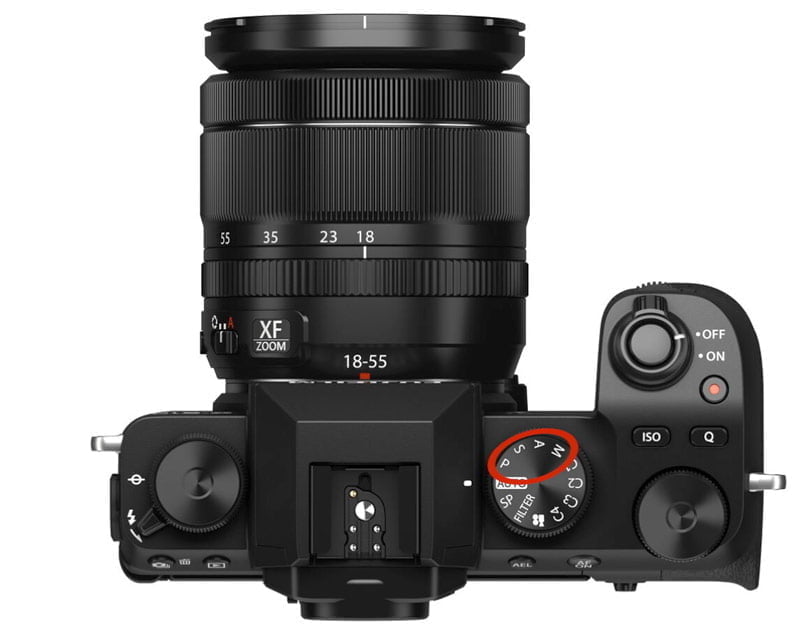
The X-E4 also added a “P” position to the shutter speed dial to quickly get into Program Auto. You can still get into Program Auto using the “regular” method of doing it on Fujifilm X cameras.
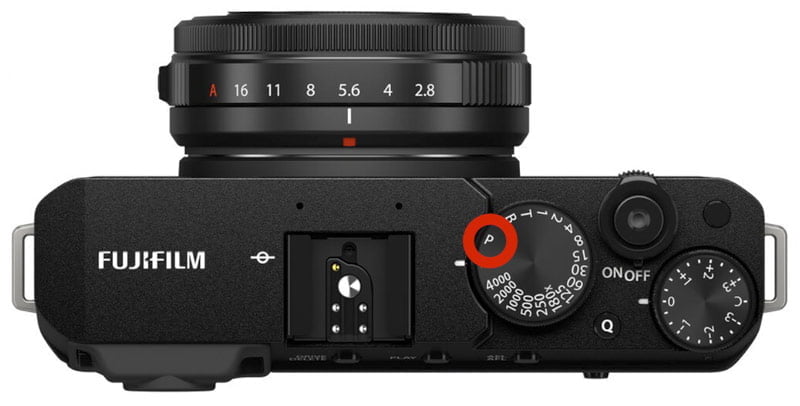
Program Auto Mode
Program Auto mode is often used when neither aperture nor shutter speed matter. You’re not concerned about the depth of field or motion occurring in the frame, so you let the camera make those decisions.
Because you’re letting the camera make those decisions – automatically choosing the aperture and shutter speed for you – then you just set those in Auto.
Nearly all Fujifilm X cameras at least have a shutter speed dial, and they all have an Auto position, indicated by the letter “A”. So set that to “A”.
You’ll also set the lens aperture to Auto. There are a couple of different ways of doing this, depending on the lens.
- Lenses with the aperture inscribed on the aperture ring: set it to “A”.
- On lenses with an aperture mode switch: set it to “A”.
- For lenses without an aperture ring: use the front command dial, depending on your command dial & aperture configuration in the Button/Dial setting menu.
Once both the shutter speed and aperture are in the camera’s hands, so to speak, you’ll see the letter “P” in the lower-left corner of the display to indicate you’re in Program Auto mode.
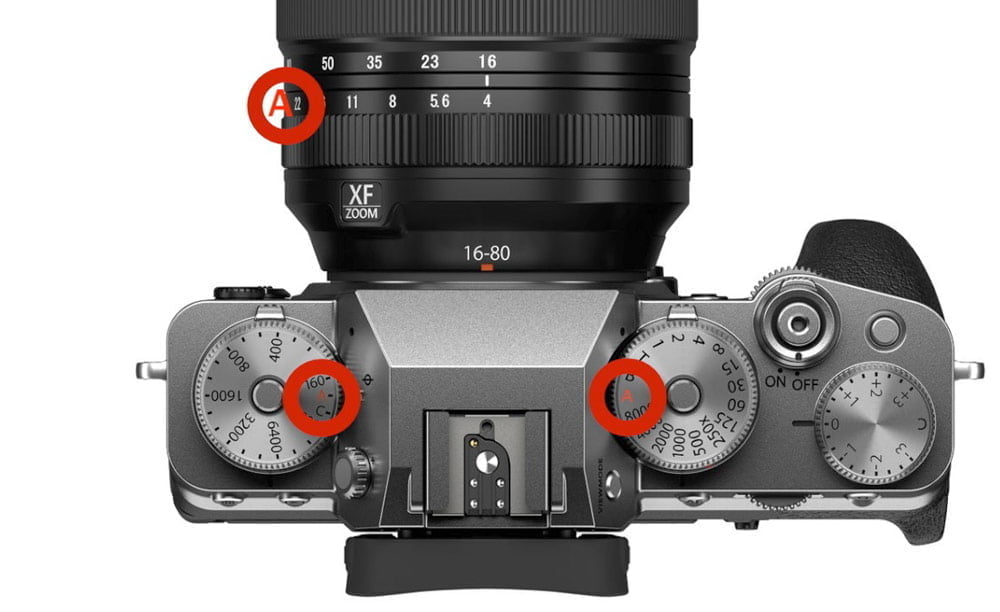
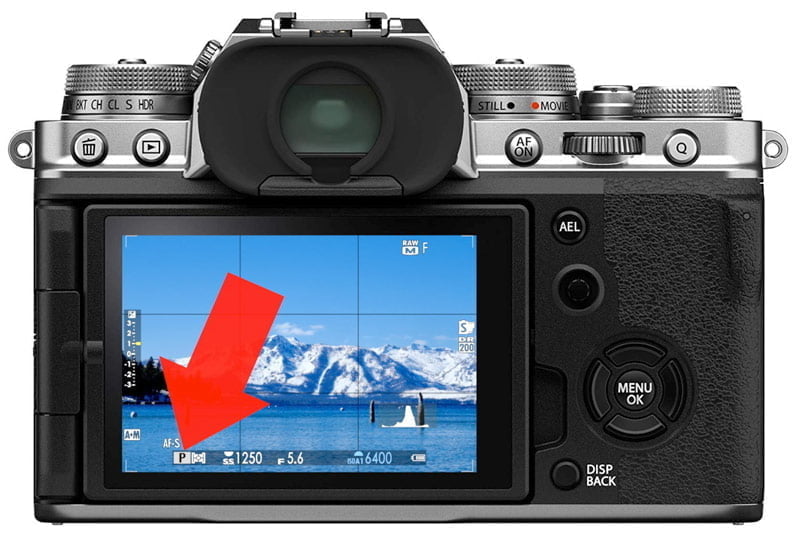
Aperture Priority Mode
You’re choosing the aperture, and the camera is automatically choosing the shutter speed in Aperture Priority mode.
So, following the concept of Program Auto mode, how do you think you enter Aperture Priority mode?
You’ll keep the shutter speed dial set to “A” since the camera is choosing that. Then you’ll choose the appropriate aperture for your desired depth of field.
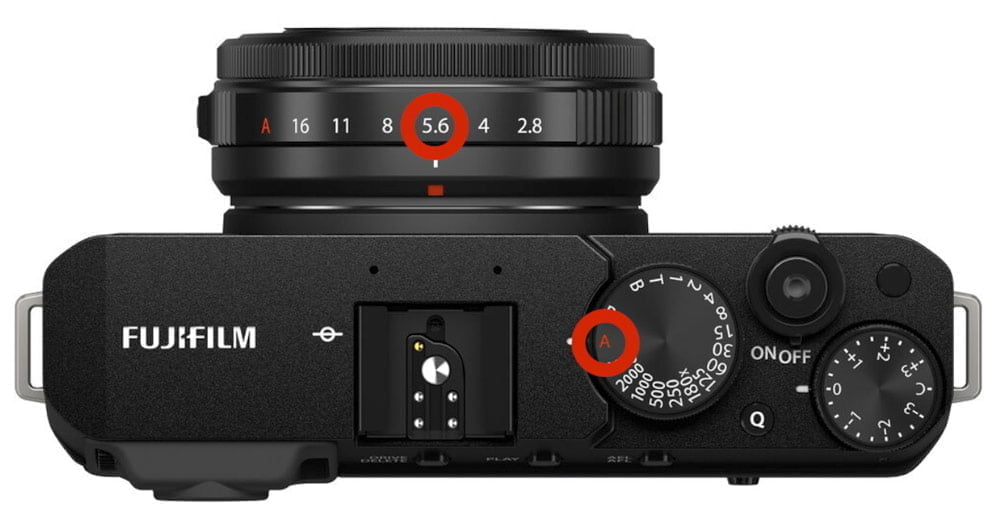
Once that’s set, you’ll see the letter “A” in the lower-left corner of the screen to indicate Aperture Priority mode.
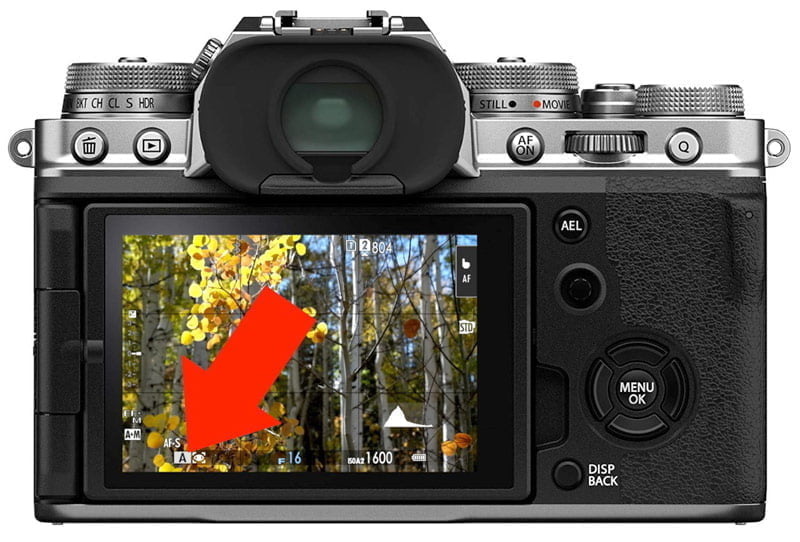
Shutter Priority Mode
Opposite of Aperture Priority mode, in Shutter Priority mode, you’re in control of the shutter speed and let the camera automatically choose the aperture.
Thus, you set the aperture to “A” as you did in Program Auto exposure mode. But now, you’re setting the shutter speed with the shutter speed dial to get your desired motion effect.
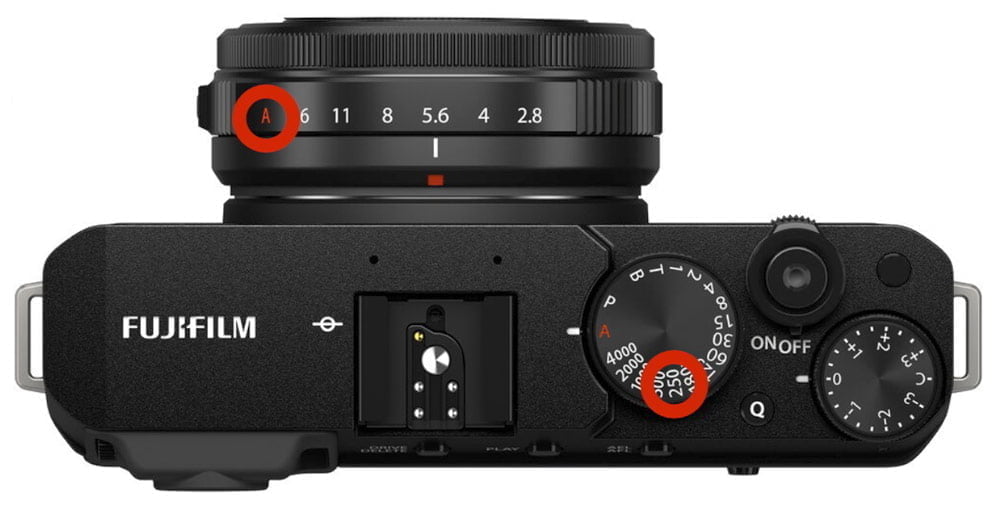
Once in Shutter Priority exposure mode, you’ll see the letter “S” in the lower-left corner of the screen.
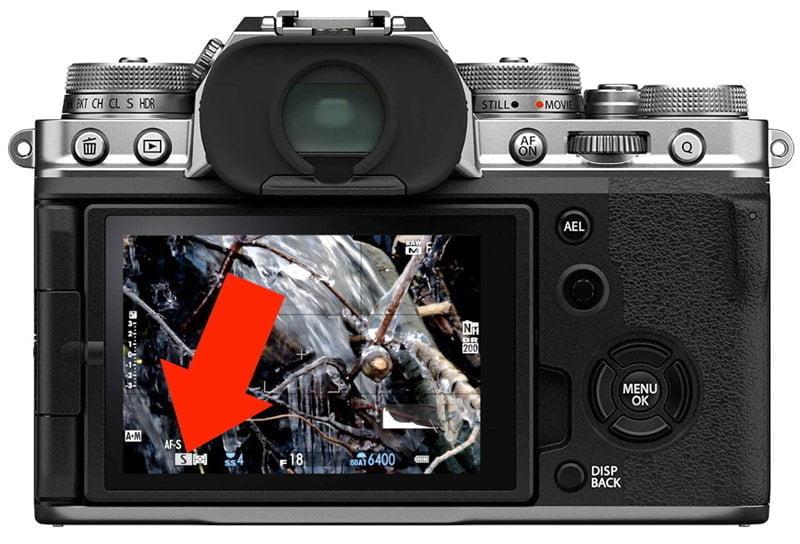
Manual Exposure Mode
In Manual Exposure mode, you’re choosing the aperture and shutter speed on your own.
Therefore, you just set these to the values you want for both depth of field and motion effect.

When those are manually set, you’ll see the letter “M” in the lower-left corner of the display.
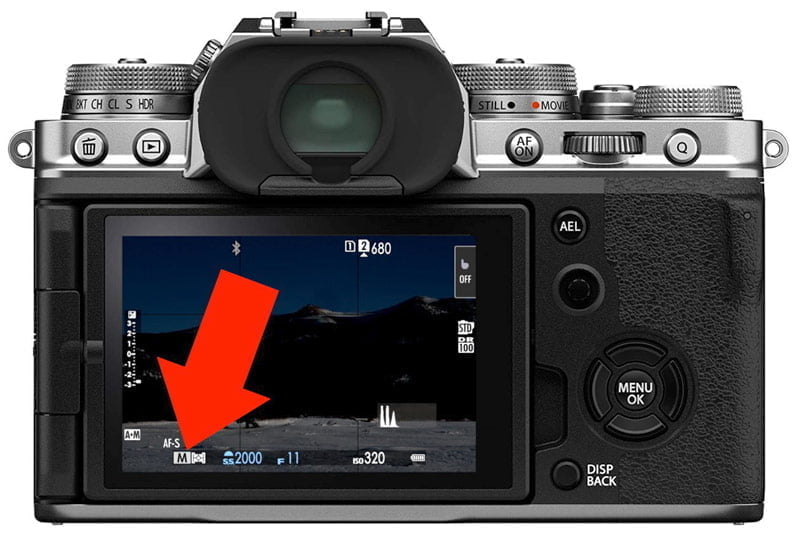
What About ISO in the Exposure Modes?
How have we talked about the four exposure modes without mentioning ISO yet?
Well, that’s because your selection of ISO – manual or auto – has nothing to do with the exposure mode. Your ISO selection is just to amplify the light after it reaches your sensor.
I do need to mention Manual Exposure mode. Setting the Manual Exposure mode in Fujifilm X cameras is also allowed with an Auto ISO program.
This isn’t really Manual Exposure mode in the popular sense since there is still an automatic element. Your image brightness is selected by the camera based on your lighting and composition. And you’ll still need to use the Exposure Compensation dial to control that image brightness.
This might be useful when you desire a specific aperture and shutter speed but want the camera to make the “image brightness” decisions.
So set whatever ISO you want, whether it’s a manual ISO or an automatic ISO. Your exposure mode is determined strictly by who is controlling the aperture & shutter speed (either you or the camera).
Wrapping Up
So when you think of everything this way – what is the camera in charge of and what are you in control of – setting the appropriate exposure mode in Fujifilm X cameras becomes much more simplified.
If you’re still wanting to explore these more in-depth, have a look at my Fujifilm Camera Fundamentals course or my camera-specific tutorial courses. Use code “blog20” to get 20% off.

Alain
Sunday 16th of October 2022
I still dont have P when all my setting are on A lens, iso, speed on my x-t4
Mike
Monday 18th of July 2022
I learned the value of Auto ISO when I had a busniess photographing school sports. The lighting at night games is inconsistent across the field and also across the court in older gyms. Auto ISO means one less thing to think about.
John Peltier
Tuesday 19th of July 2022
I trust the camera for ISO...certainly one less thing for me to think about :)
mark casebeer
Saturday 30th of April 2022
Thanks, John, you explained this well. Personally I really don't understand why Fuji is going to the more traditional type of dials and no D-pad on some of their cameras? Once you learn how to control your camera using the top dials I don't ever what to go back to using the menu to make adjustments. I thought the manual top dials are what set Fuji apart from other companies? I guess everyone has different needs. Fuji please don't change the X-T cameras alway from the current setup!